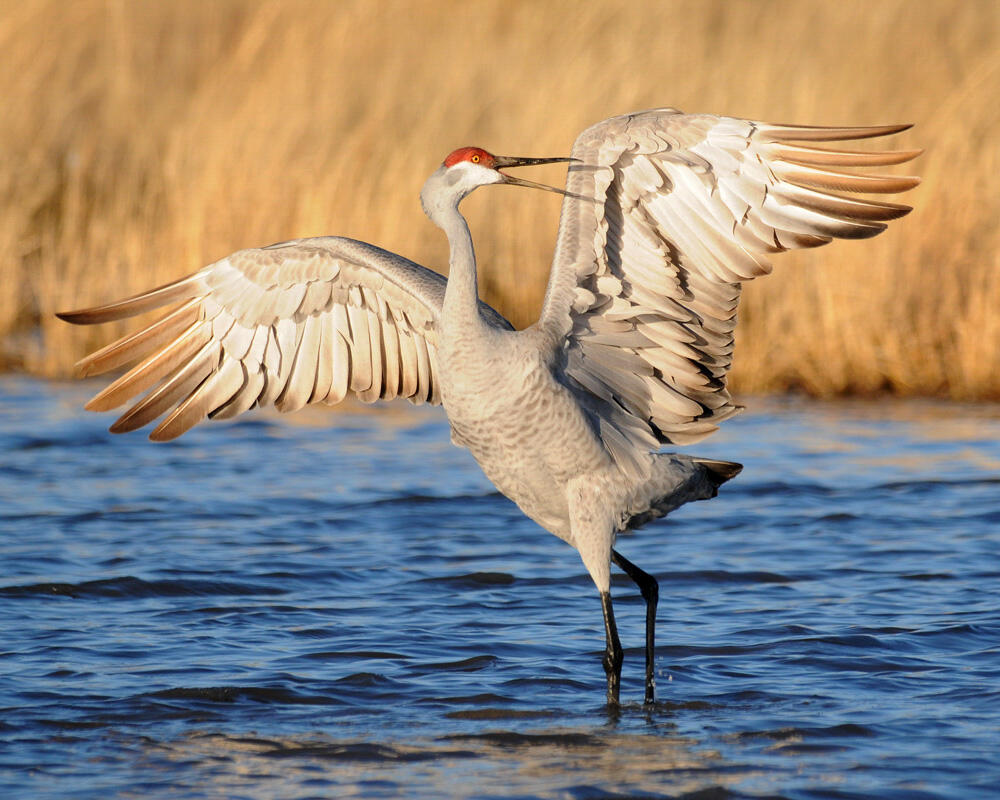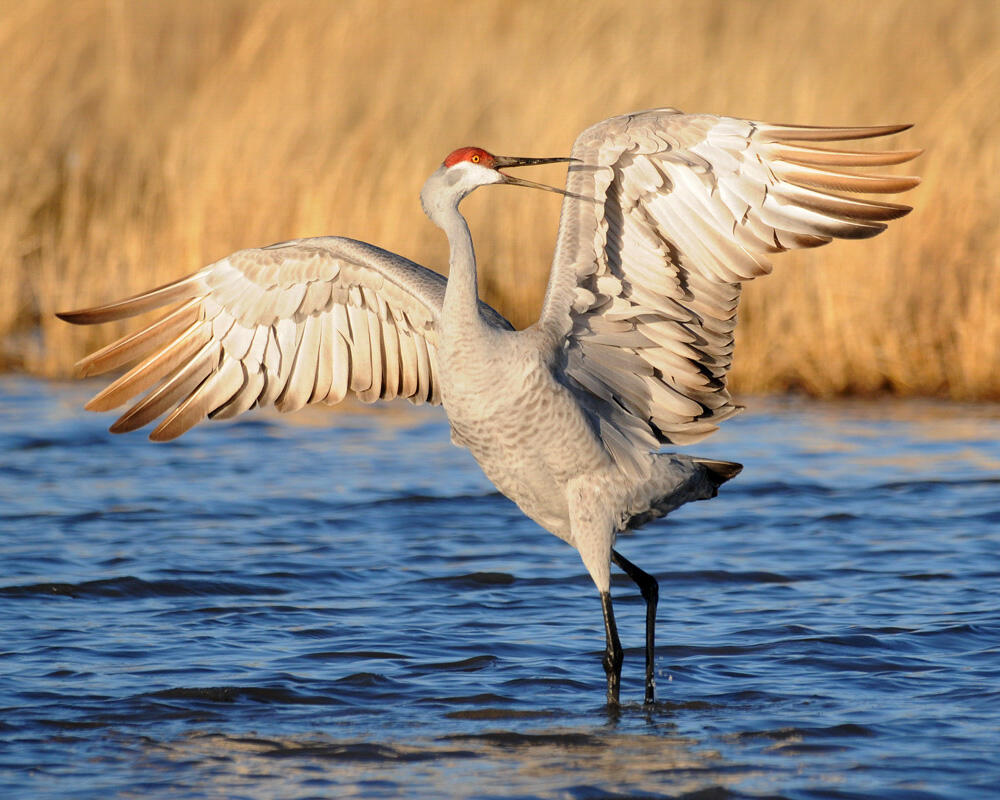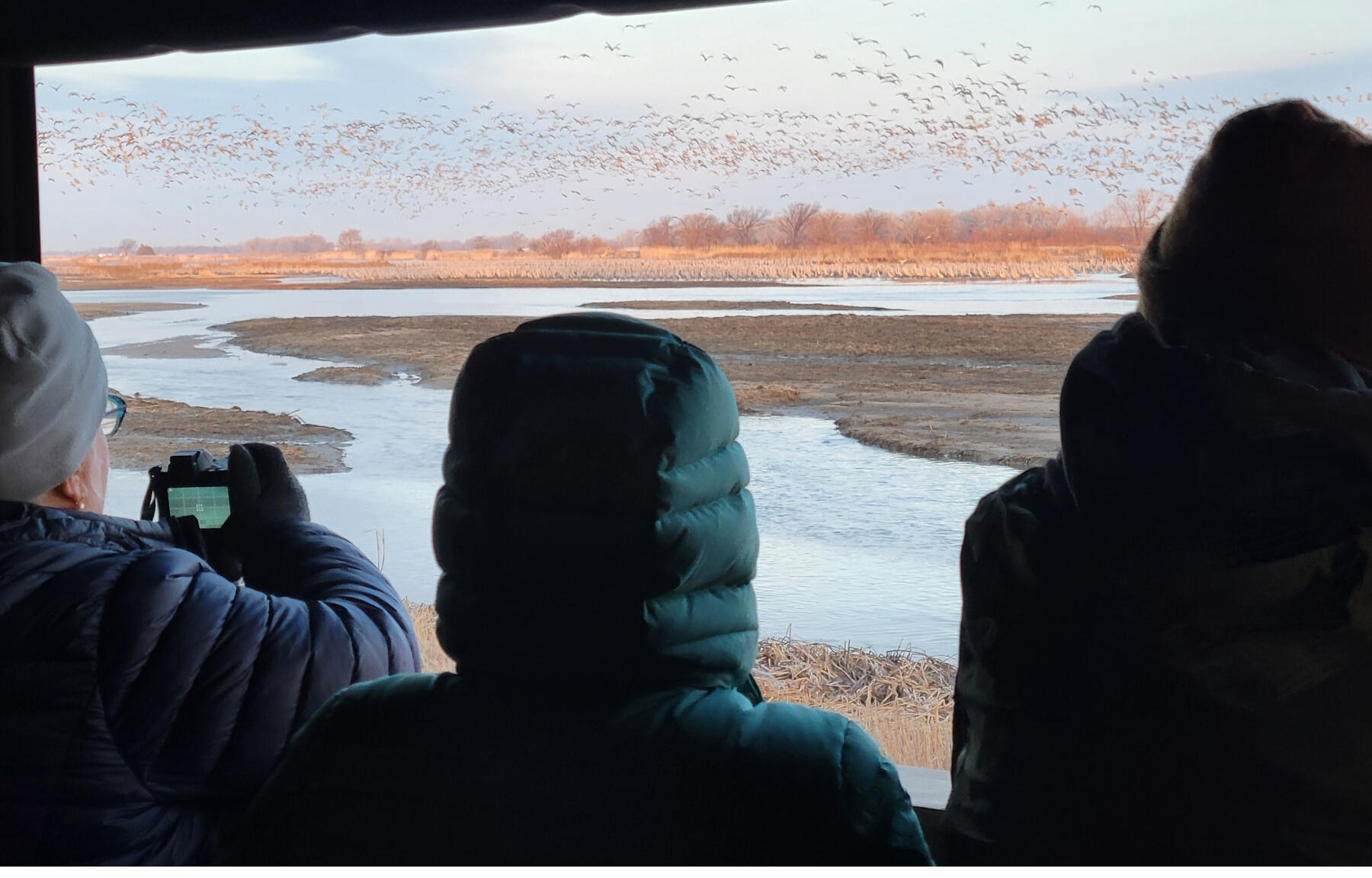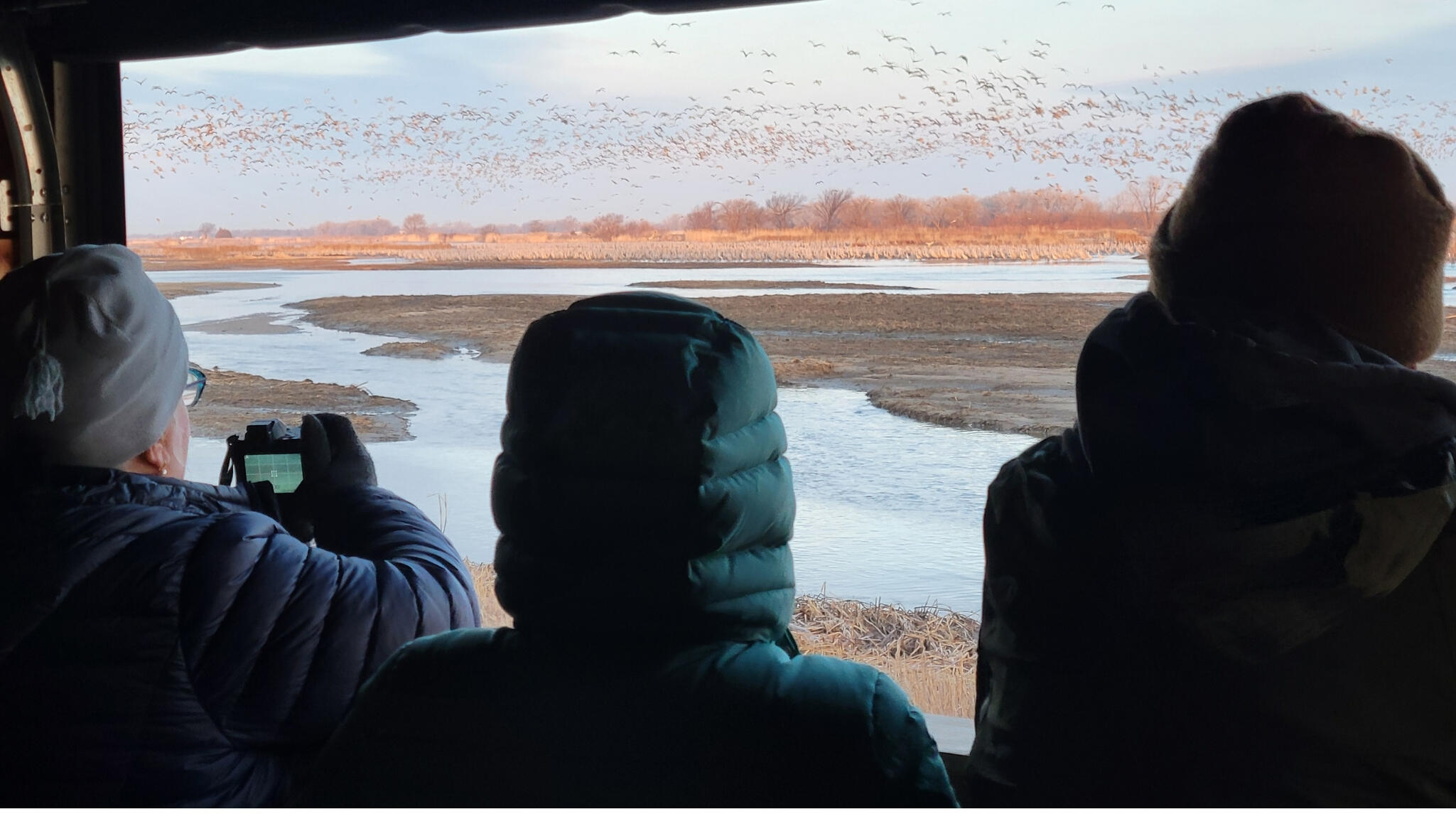Explore Options: Reservations open Jan. 8, 2026 at 9:00 a.m. CT
Sandhill Cranes in flight. Photo: Teddy Llovet/Audubon Photography Awards
Every March and April, over a million Sandhill Cranes converge on the Platte River Valley in central Nebraska to fuel up before continuing north to their nesting grounds. Audubon’s Rowe Sanctuary is at the heart of this magnificent crane staging area.
During the migration, Rowe Sanctuary offers daily guided tours at sunrise and sunset to view the spectacular concentrations of Sandhill Cranes on their river roosts from new discovery stations strategically placed along the Platte River close to Sandhill Crane roosts. Nature enthusiasts, bird lovers, and photographers will have multiple ways to experience this historic migration.
Our crane discovery stations include wall-to-wall windows that allow for an immersive crane viewing experience along prime roosting locations on the Platte River, $60 per person.
The Guided Crane Photography Experience provides photographers with the opportunity to capture world-class shots of cranes on the Platte River in a small group setting, $120 per person.
The Overnight Crane Photography Experience provides guests with the opportunity to spend the night in a viewing blind on the banks of the Platte River and photograph thousands of cranes as they fly into the river at dusk, and lift off at dawn, $275 person, limit two people.


Sandhill Crane, adult Photo: Rolland Swain/Audubon Photography Awards
This year for crane season, you can now book special events and programs in addition to your guided viewing experience.


Visitors observing cranes from the viewing blinds. Photo: Marcos Stolzfus/Audubon
Browse options for guided crane tours and programs happening while you are visiting!
March 21, 2026 | 1:00 p.m. - 4:00 p.m. Braided in Unison is a new event that brings people together to celebrate the Platte River’s braided river ecosystem.
Check out tips to help you maximize your visit, from airport options, where to stay, and what to bring. We've got you covered.
Audubon’s Rowe Sanctuary features one of the most intimate and spectacular views of the sandhill crane migration that occurs along the Platte River in Nebraska. The five mile stretch of river covered by this camera is one of the most densely populated sandhill crane roosts in the world with 100,000-200,000 cranes at the height of migration. Groups of cranes stay around three weeks once they arrive to this location and the best times to view them on the river is early mornings and evenings. The morning liftoff either happens slowly, with smaller groups of cranes leaving as the sun continues to rise, or more frequently with tens of thousands of sandhill cranes leaving all at once in a cloud that blots out the sky. Sandhill cranes return to the river in the evening to spend the night on the river’s shallow sandbars. Groups of cranes pour into the river silhouetted by the setting sun as they dance and socialize before falling asleep.
Watch the migration from our free online Crane Cam!
Crane Season: February 15 - April 15
During Crane Season, we limit trail use to protect the birds from disturbance while roosting. Visitors should not plan to watch Sandhill Cranes on the river from Rowe Sanctuary Trails. Information about public viewing locations can be found here.
Outside of Crane Season, Rowe’s trails and parking lot are open from dawn to dusk every day.
Keep checking back for crane season updates or subscribe to our eNews!
We offer special consideration for large groups of 10 or more visitors, such as school groups, non-profit and community organizations, and company trips. More information can be found here.